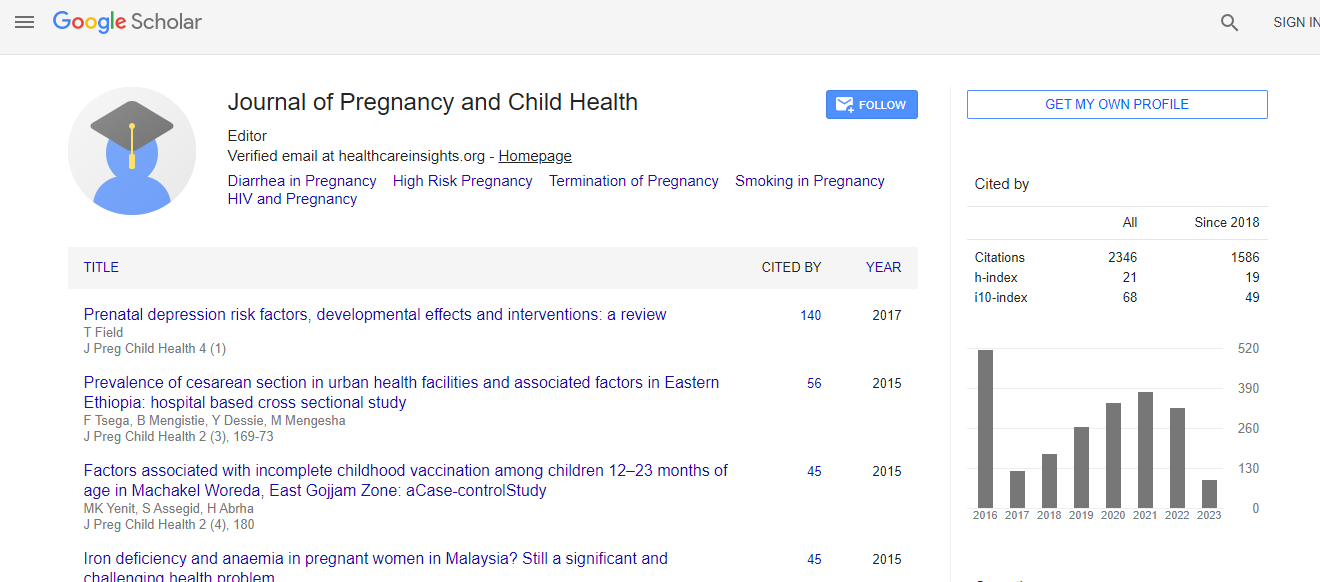Research Article
Can We Improve The Birth Weight Prediction? The Effect of Normal BMI Using A Multivariate Model
| Vila-Candel R1*, Martin-Moreno JM2, Alamar S3, Soriano-Vidal FJ4 and Naranjo de la Puerta FG1 | |
| 1Department of Obstetrics and Gynaecology, Hospital Universitario de la Ribera, Spain | |
| 2Department of Preventive Medicine and Public Health, Universitat de Valencia, Spain | |
| 3Department of Nursing, Universidad Católica de Valencia, Spain | |
| 4Department of Obstetrics and Gynaecology, Hospital LLuis Alcanyis, Spain | |
| Corresponding Author : | Vila-Candel R Department of Obstetrics and Gynaecology Hospital Universitario de la Ribera, Spain Tel: 34962001010 E-mail: RVila@Hospital-Ribera.com |
| Received: December 04, 2014; Accepted: April 19, 2015; Published: April 22, 2015 | |
| Citation: Vila-Candel R, Martin-Moreno JM, Alamar S, Soriano-Vidal FJ, Naranjo de la Puerta FG (2015) Can We Improve The Birth Weight Prediction? The Effect of Normal BMI Using A Multivariate Model. J Preg Child Health 2:154. doi: 10.4172/2376-127X.1000154 | |
| Copyright: © 2015 Vila-Candel R, et al. This is an open-access article distributed under the terms of the Creative Commons Attribution License, which permits unrestricted use, distribution, and reproduction in any medium, provided the original author and source are credited. | |
Abstract
Objective: The construction of a predictive model that improves the estimation of the fetal weight (EFW). Study Design: A comparative, descriptive study. One hundred forty pregnant women were recruited at two-stage sample in health department in Spain. They were classified in four groups depending on the pre-gestational BMI. Fetal weight was estimated by ultrasound at 35-40 weeks (EFW40w) by one gynecologist. A regression model was created with the variables that reacted to the newborn´s weight, symphysis-fundal height (SFH), EFW40w, gestational age (GA), ferritin level and cigarettes smoked. Results: A multivariate model was created for the NW group to estimate the fetal weight (EFWme), resulting in R2=0.727 (p<0.001). The differences of the averages obtained between EFW40w and EFWme, with the newborn´s weight were significant (p<0.001). EFWme underestimates birth weight by 0.07 g (mean error 0.53%), and EFW40w overestimates it by 300.89 g (mean error 10.12%). In order to evaluate the predictive model and verify the predictions we used the Bland-Altman analysis. The average error in estimating the birth weight with EFWme was 1.94% underestimating the result, whereas the ultrasound error overestimated the result 10.93%. Conclusion: The multivariate model created for the NW group improves the accuracy of the ultrasound.

 Spanish
Spanish  Chinese
Chinese  Russian
Russian  German
German  French
French  Japanese
Japanese  Portuguese
Portuguese  Hindi
Hindi 
